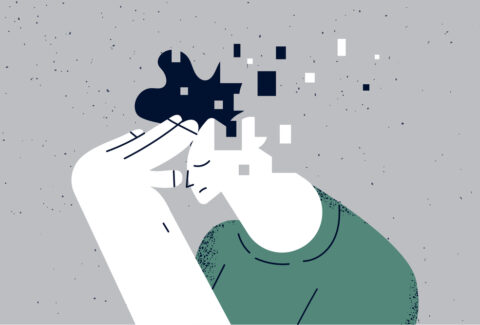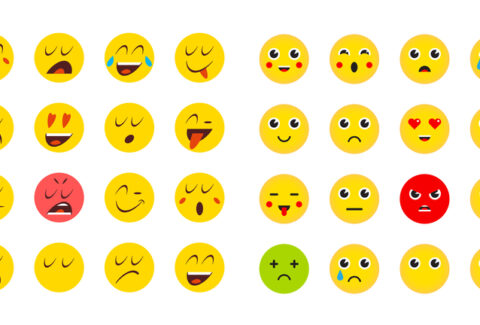Emotion Is Culture-Bound: How Language and Society Shape the Emotional Brain

Emotion Is Culture-Bound: How Language and Society Shape the Emotional Brain
Abstract
Contrary to the classical view of universal emotions, growing evidence suggests that emotional experience is deeply shaped by culture, language, and social learning. The Theory of Constructed Emotion (TCE) posits that the brain constructs emotions based on predictions using culturally acquired concepts. This article explores cross-cultural studies, linguistic anthropology, and affective neuroscience to demonstrate how emotional life is neither fixed nor biologically predetermined. We examine culturally specific emotion concepts, discuss the implications for therapy and cross-cultural communication, and argue for a culturally humble, linguistically informed approach to emotional health.
Keywords
Constructed Emotion, Culture and Emotion, Emotion Concepts, Language and Emotion, Cross-Cultural Psychology, Emotion Anthropology, Emotion Regulation, Lisa Feldman Barrett
Introduction
In many psychological models, emotions are assumed to be biologically universal—hardwired reactions shared across all human beings. But what if your emotions are not just your own, but your culture’s too? The Theory of Constructed Emotion (TCE) disrupts the universalist paradigm, showing that emotions are culturally and linguistically constructed (Barrett, 2017).
According to TCE, the brain uses language-based emotion concepts to predict and categorize internal states. These concepts are learned through cultural immersion, socialization, and linguistic labeling. Thus, emotional experience is shaped not only by biology but by the social fabric of meaning in which we live (Lindquist & Gendron, 2013; Wierzbicka, 1999).
Theoretical Framework
Emotion Concepts Are Socially Learned
In the TCE framework, emotion concepts are not innate. Instead, they are acquired through repeated exposure to emotion words and modeled emotional behaviors in one’s cultural environment (Barrett, 2006). The brain uses these learned categories to predict what is happening inside the body and apply meaning.
Language as a Scaffold for Emotion
Language not only helps us describe emotions—it constructs them. The words we know influence the granularity, boundaries, and intensity of emotional experiences. Without a word for a specific emotional state, the experience may not be encoded, recalled, or acted upon with clarity (Lindquist et al., 2015).
Application / Analysis
Cross-Cultural Emotion Concepts
Cultural linguistics reveals emotion terms that have no English equivalent, reflecting unique patterns of emotional understanding:
- Amae (Japanese): Dependency that is welcomed and indulged
- Lítost (Czech): A state of grief and remorse mixed with compassion
- Ubuntu (Southern Africa): A deep sense of shared humanity
- Schadenfreude (German): Joy in another’s misfortune
These examples demonstrate that emotional life is not uniformly expressed or felt. What one culture interprets as anger may be seen as embarrassment or grief in another, depending on available emotion concepts (Gendron et al., 2014).
Cultural Relativity in Emotion Recognition
Studies show that people are better at recognizing emotions within their own culture than in others, a phenomenon known as in-group advantage (Elfenbein & Ambady, 2002). Additionally, facial expressions, often assumed to be universal, are interpreted differently across societies (Jack et al., 2012).
Cultural Shaping of Emotional Norms
Cultural values also shape emotion regulation strategies. For example:
- Western cultures tend to emphasize individual expression and emotional authenticity.
- East Asian cultures may prioritize emotional moderation and relational harmony (Matsumoto et al., 2008).
This difference influences how emotions are expressed, interpreted, and even felt.
Implications
For Clinical Practice
Therapists must recognize that clients may use, define, and interpret emotion words differently based on cultural background. Emotions should not be pathologized simply because they differ from a dominant cultural norm. Culturally humble and linguistically informed interventions can better serve diverse populations (Sue et al., 2009).
For Global Mental Health
Programs promoting emotional literacy and regulation should avoid exporting Western emotion concepts without adaptation. Emotional competence in one culture may not align with that in another. Localized, community-driven approaches to emotional learning are essential.
For Research and Science
Cross-cultural studies must go beyond surface-level translation of emotion words and instead investigate deep structure differences in emotion construction. Neuroscience must incorporate diverse samples and move away from Western-centric paradigms (Henrich et al., 2010).
Conclusion
Emotions are not universal fingerprints—they are culturally embedded predictions. Language, culture, and social learning provide the conceptual tools our brains use to make sense of the body and world. By acknowledging and honoring the cultural roots of emotional life, we create more inclusive, accurate, and healing models of mental health.
References
- Barrett, L. F. (2006). Solving the emotion paradox: Categorization and the experience of emotion. Personality and Social Psychology Review, 10(1), 20–46. https://doi.org/10.1207/s15327957pspr1001_2
- Barrett, L. F. (2017). How emotions are made: The secret life of the brain. Houghton Mifflin Harcourt.
- Elfenbein, H. A., & Ambady, N. (2002). On the universality and cultural specificity of emotion recognition: A meta-analysis. Psychological Bulletin, 128(2), 203–235. https://doi.org/10.1037/0033-2909.128.2.203
- Gendron, M., Roberson, D., van der Vyver, J. M., & Barrett, L. F. (2014). Perceptions of emotion from facial expressions are not culturally universal: Evidence from a remote culture. Emotion, 14(2), 251–262. https://doi.org/10.1037/a0036052
- Henrich, J., Heine, S. J., & Norenzayan, A. (2010). The weirdest people in the world? Behavioral and Brain Sciences, 33(2–3), 61–83. https://doi.org/10.1017/S0140525X0999152X
- Jack, R. E., Caldara, R., & Schyns, P. G. (2012). Internal representations reveal cultural diversity in expectations of facial expressions of emotion. Journal of Experimental Psychology: General, 141(1), 19–25. https://doi.org/10.1037/a0023463
- Lindquist, K. A., & Gendron, M. (2013). What’s in a word? Language constructs emotion perception. Emotion Review, 5(1), 66–71. https://doi.org/10.1177/1754073912451351
- Lindquist, K. A., Satpute, A. B., & Gendron, M. (2015). Does language matter for emotion? Current evidence and new directions. Emotion Review, 7(2), 130–134. https://doi.org/10.1177/1754073914553006
- Matsumoto, D., Yoo, S. H., & Nakagawa, S. (2008). Culture, emotion regulation, and adjustment. Journal of Personality and Social Psychology, 94(6), 925–937. https://doi.org/10.1037/0022-3514.94.6.925
- Sue, S., Cheng, J. K. Y., Saad, C. S., & Chu, J. P. (2012). Asian American mental health: A call to action. American Psychologist, 67(7), 532–544. https://doi.org/10.1037/a0028900
- Wierzbicka, A. (1999). Emotions across languages and cultures: Diversity and universals. Cambridge University Press.
Download the scholarly version of this article by clicking HERE






